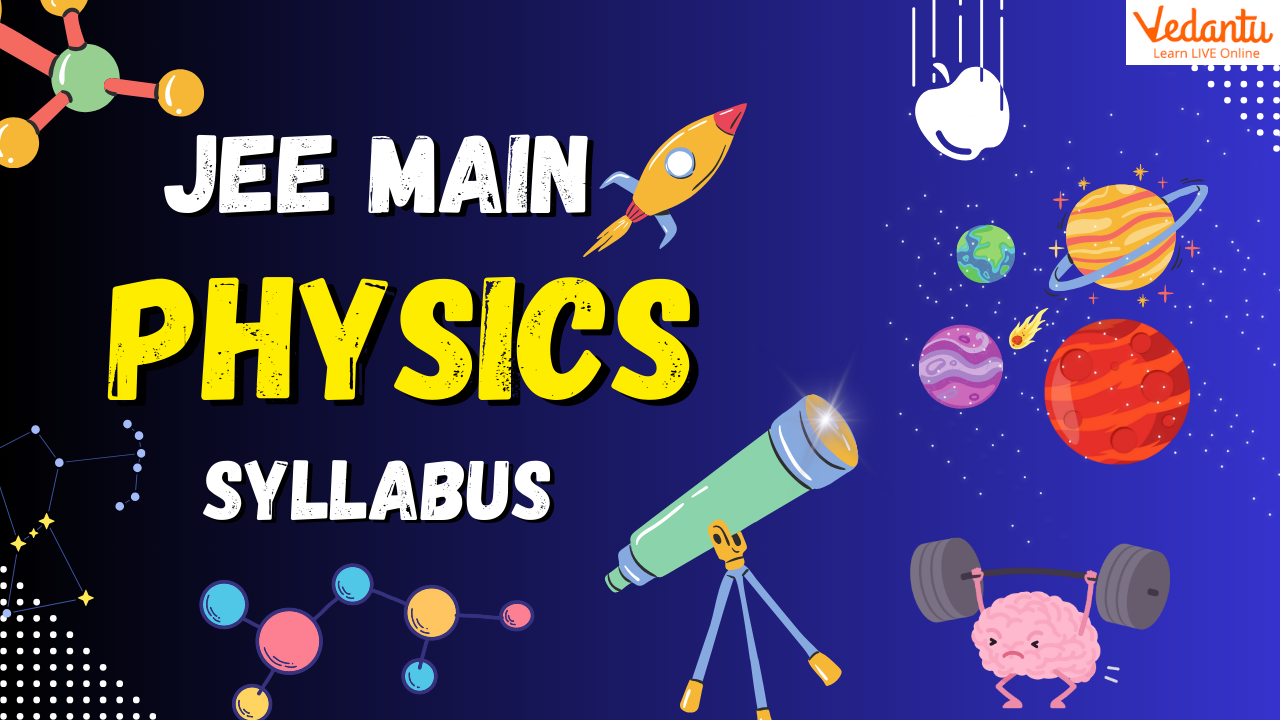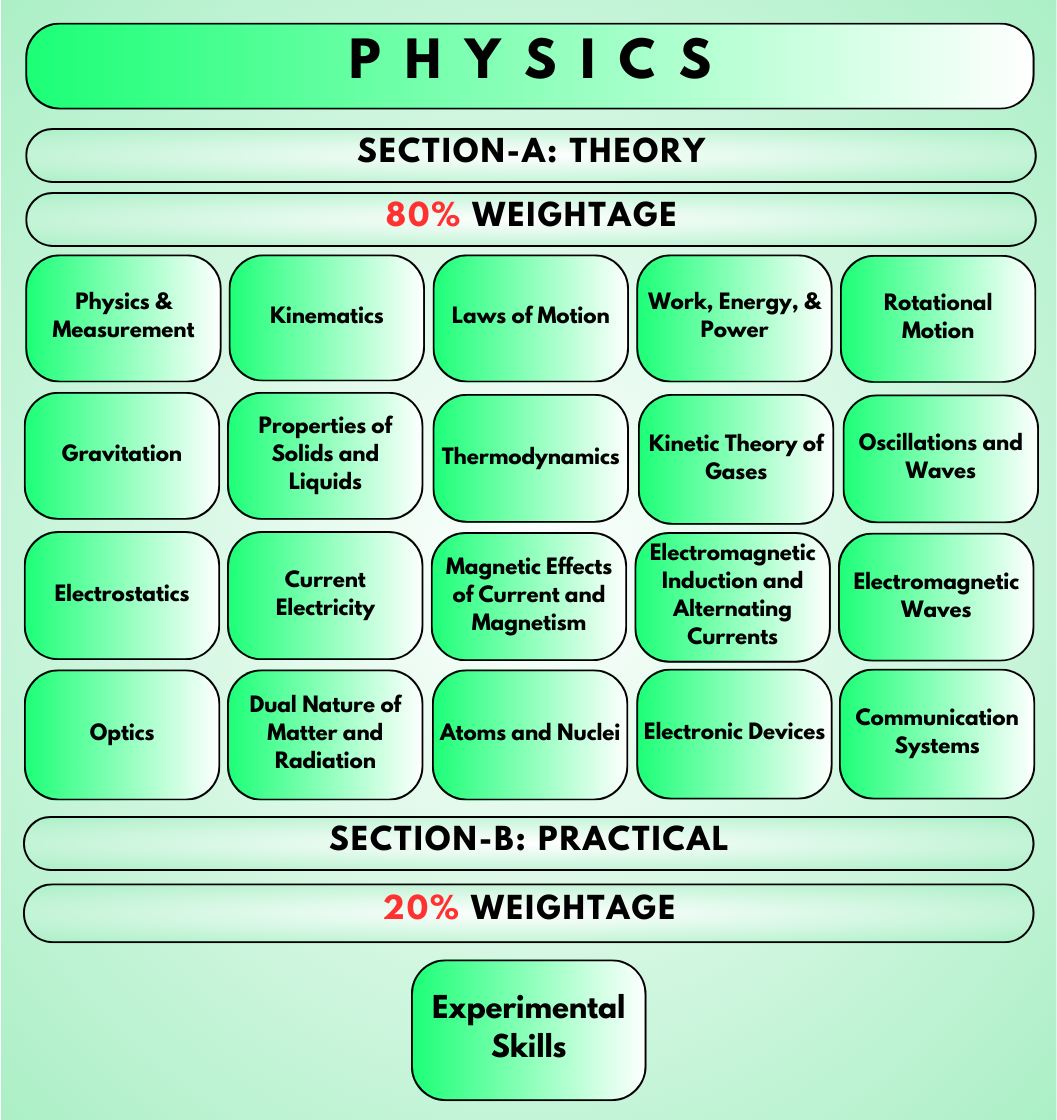JEE Main Updated Physics Syllabus 2024: Download The Topic-wise PDF with Weightage












FAQs on JEE Main Physics Syllabus 2024 (Released)
1. What is the JEE Main Physics Syllabus for 2024?
The JEE Main Physics Syllabus for 2024 covers a broad range of topics in physics, including:
Mechanics: Units and dimensions, motion in one dimension, motion in two dimensions, laws of motion, work, energy and power, rotational motion, gravitation, properties of solids and liquids.
Electromagnetism: Electrostatics, current electricity, magnetic effects of current and magnetism, electromagnetic induction and alternating currents, electromagnetic waves.
Optics: Wave nature of light, geometrical optics, physical optics.
Modern Physics: Dual nature of matter and radiation, atoms and nuclei, electronic devices.
2. Where can I download the JEE Main 2024 Physics Syllabus PDF?
You can download the JEE Main 2024 Physics Syllabus PDF from the official website of the conducting authority. We provide a direct link to the PDF on our Vedantu page for your convenience.
3. Why is it important to know the weightage of topics in the JEE Main Physics syllabus?
Knowing the weightage of topics in the JEE Main Physics syllabus can help you prioritize your studies and focus on the most important topics. This will help you make the most of your study time and improve your chances of getting a good score in the exam.
4. Can I find the JEE Main 2024 Physics Syllabus on this page as well?
Yes, we provide access to the JEE Main 2024 Physics Syllabus. It can be helpful for reference and comparison.
5. How do I prepare effectively using the JEE Main Physics Syllabus?
There are a few things you can do to prepare effectively using the JEE Main Physics Syllabus:
Create a Study Schedule: Break down the syllabus into manageable chunks and create a study schedule that you can stick to. This will help you stay on track and make sure you are covering all of the material.
Focus on the Important Topics: Use the weightage of topics to prioritize your studies and focus on the most important topics first.
Practice Regularly: Solve previous year's question papers and take mock tests to get familiar with the exam format and question types.
Seek Help When Needed: If you are struggling with any of the concepts, don't hesitate to ask your teacher or tutor for help.
6. Is the JEE Main Physics Syllabus subject to change?
Yes, the JEE Main Physics Syllabus is subject to change from year to year. It is important to check the official website of the NTA for the latest syllabus before you start your preparations.
7. Can I request updates or notifications about changes to the JEE Main Physics Syllabus?
You can subscribe to our Vedantu website for updates and notifications about any changes in the JEE Main Physics Syllabus or other related information.
Or
You can request updates or notifications about changes to the JEE Main Physics Syllabus by subscribing to the NTA's email list.
8. Is there any specific exam strategy based on the syllabus for JEE Main Physics?
Here are some tips for exam strategy based on the syllabus for JEE Main Physics:
Read the Question Carefully: Make sure you understand what the question is asking before you start answering it.
Break Down Complex Questions: If you are facing a complex question, break it down into smaller parts and solve each part step by step.
Use Formulas Wisely: Formulas can be very helpful in solving physics problems, but make sure you use them correctly.
Manage Your Time Wisely: Divide your time wisely between the different sections of the paper and don't spend too much time on any one question.
Review Your Answers: Before you submit your paper, take some time to review your answers and make sure you haven't made any careless mistakes.





